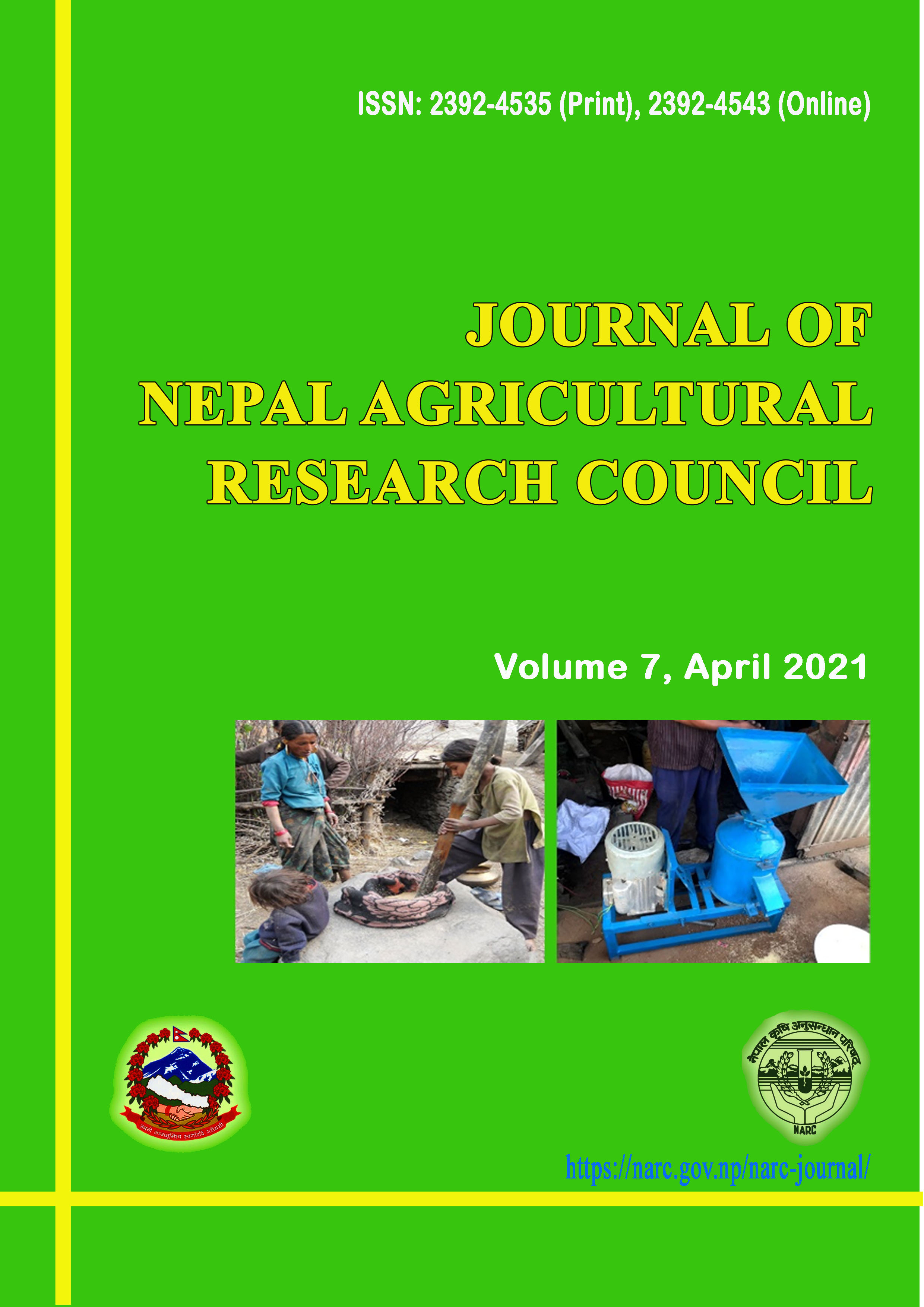The Major Chemical Constituents of Teosinte Grown as Mono and Mixed Cropping with Legumes in different Sowing Date
DOI:
https://doi.org/10.3126/jnarc.v7i1.36918Keywords:
Fodder, chemical constituents, legume, fodder combination, fodder qualityAbstract
Teosinte (Euchlaena mexicana) is one of the most popular summer growing cereal fodder, yet with comparatively low level of chemical constituents. The quality of this fodder can be improved through better by cultivation management including sowing dates and mixed cropping with legume. The main objective of this study was to determine the forage quality as reflected by major chemical constituents of pure stands of teosinte and binary mixtures of teosinte with commonly available legumes under different dates of sowing. Four fodder combinations; teosinte mono crop, teosinte+ cowpea, tesosinte+ rice bean, and teosinte+ lablab bean was arranged to cultivate in three different date of sowing in the field in a Split Plot Design with 5 replications. Main plot treatments were different sowing dates and sub-plot treatments were combinations of fodder species. Dry herbage mass production, crude protein (CP), neutral detergent fiber (NDF), acid detergent fiber (ADF), acid detergent lignin (ADL) and Ash were determined. The results showed that the significantly the highest Dry herbage and CP were obtained from fodder combination teosinte+ cowpea if sown at 18th April, whereas the significantly highest mean values of ADF and NDF were obtained for teosinte mono fodder crop. However, the lowest average value of ADF and NDF was obtained for fodder combination teosinte with cowpea. The average value of Ash and ADL of both harvest for fodder combination and date of sowing was statistically similar (p>0.05). The effect of treatments interaction/combination on cumulative dry herbage was statistically high (p<0.05) when teosinte+ cowpea was sown at 18th April. However, effect of treatments interaction/combination on average value of CP, NDF, ADF, ADL and Ash of both harvests (g/kg DM) was statistically similar (p>0.05). The results showed that mixture of teosinte with cowpea sown at 18th April could be the best combination in terms of quantity as well as for major chemical constituents that could reflect better quality of fodder harvest.
Downloads
Downloads
Published
How to Cite
Issue
Section
License
This license enables reusers to distribute, remix, adapt, and build upon the material in any medium or format for noncommercial purposes only, and only so long as attribution is given to the creator.




